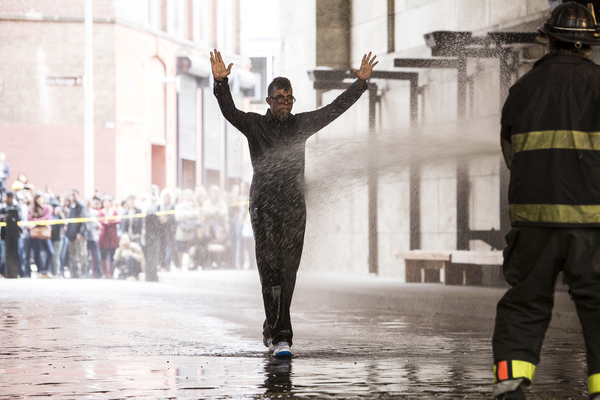Bertolt Brecht’s political theater revolutionized the involvement and the emotions of the audience by having them no longer feel the illusion of being an unseen spectator. The Dadaists used satire, anti-rational and anti-idealistic discourse to critique World War I and the capitalist agenda behind it. Dada exhibitions often had the feeling of a protest. The challenge against elitism in the art world was echoed and incorporated into the work by the artists of the Fluxus movement as well. In the 1950s, groups of artists became devoted to contextualizing the horrors in the aftermath of World-War II through staging Happenings and exhibitions focused on Humanism. In the 1960s through the 70s, there were many artists groups associated with the Anti-Vietnam War movement, Civil Rights Movement and the Feminist movement. During last decade’s “War on Terror,” anti-war protests also incorporated powerful visual elements and iconography with artists making graphics for grassroots causes. More recently Occupy Wall Street incorporated a multitude of visuals and performances by artists like Reverend Billy Talen to embolden their statement in opposition of wealth inequality and corporate corruption.
Our recent project (October 7th, 2014) was a one time performance by Dread Scott called On the Impossibility of Freedom: In a Country Founded on Slavery and Genocide. Dread has been at the forefront of addressing social inequality in his performances and installations. His work has a longstanding history in makes revolutionary art to propel history forward. Scott first received national attention in 1989 when his art became the center of controversy over its use of the American flag. President G. H.W. Bush declared his artwork What is the Proper Way to Display a U.S. Flag? “disgraceful” and the entire US Senate denounced this work when they passed legislation to “protect the flag.” Scott added to the controversy when he and a group of artists/activists burned flags on the steps of the US Capitol. This resulted in a Supreme Court case and a landmark First Amendment decision.
Recently Dread Scott has been addressing the dire situation faced by black men and women across the nation. His recent series presented around the streets of Harlem is called “Wanted,” a community-based art project that address the criminalization of youth in America. He wrote an Op-Ed on Ferguson, where Michael Brown, an unarmed teenager, was killed by a police officer, sparking intense standoffs between police and the community.
Dread’s performance with More Art in part, references the 1963 Civil Rights struggle in Birmingham Alabama, during which city officials used high-pressure water canons to disperse non-violent protesters and bystanders in an effort to maintain segregation and legalized discrimination. On the Impossibility of Freedom will feature Dread Scott engaging in a Sisyphean attempt to walk into the battering force of water jetting from a fire hose. While the performance is highly reminiscent of crowd control tactics used in the past, it also serves as a statement on a myriad of socio-cultural issues that affect a diverse group of marginalized individuals through discriminatory policies in immigration, criminal justice, welfare and education. This piece also reflects on present-day struggles against racism and the struggle for equality, as those demonstrated by the protests and then the militarized police response in Ferguson, Missouri.
“On the Impossibility of Freedom in a Country Founded on Slavery and Genocide is a performance about the struggle for freedom,” said Scott. “People yearn for freedom and have repeatedly struggled against oppressive governments, economic, political and social relations. People have taken great risks in a fight for emancipation and have often been battered in the process.”
The performance resonated with the audience which included over 200 students from Bedford Stuyvesant, Brooklyn. Many of whom had only heard about this brutal law enforcement tactic during the civil rights era. For many, seeing it provided a deep emotional realization. One student said afterwards “It was very touching — we got emotional. It brought back feelings, even though we weren’t there, but we felt like we could relate to it,” she said. “It was good. It felt I saw it before, because we had always heard about it.”At one point Dread powered on against the hose, holding his hands high above his head, a reference to Brown who held his hands up in the air to signal “don’t shoot.”



